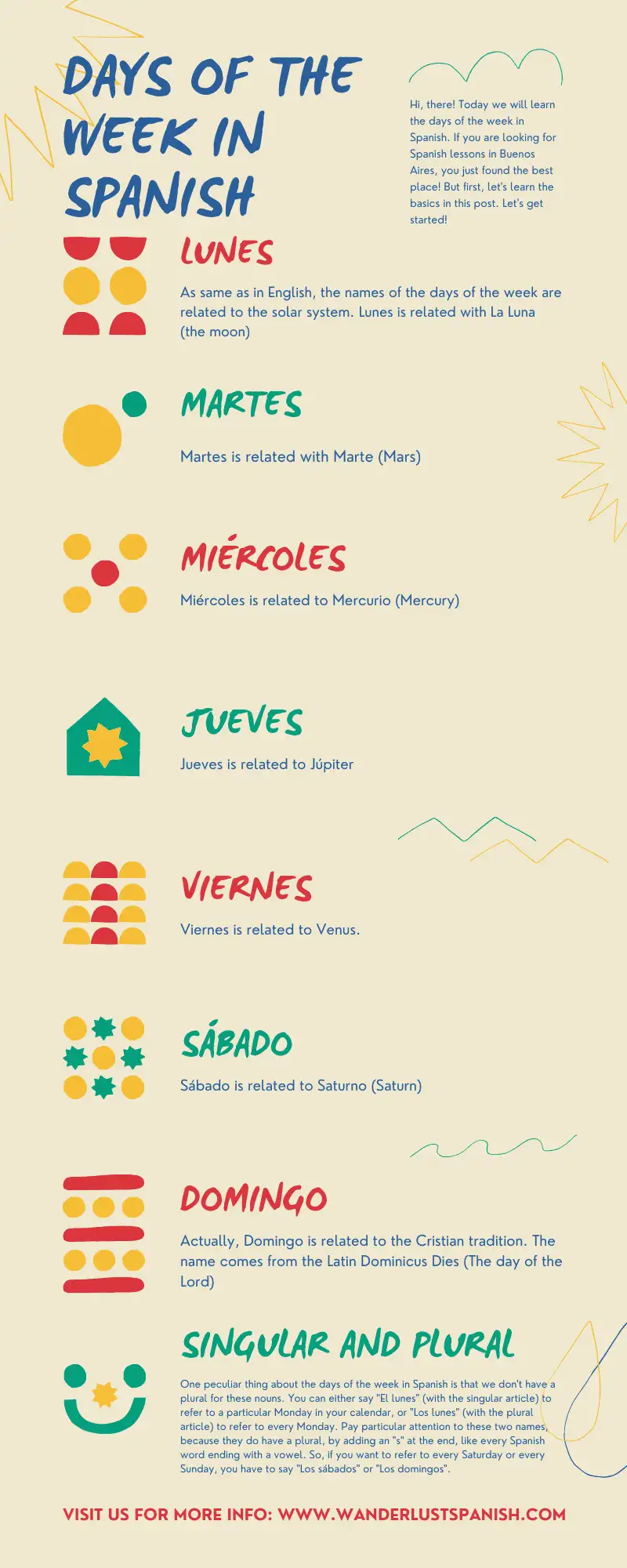Hello everybody! Today we’ll study how to tell the time in Spanish. These days the most common thing to do is just look at your cellphone but, what if you’re out of battery? Or if you just want to start a conversation in Spanish by asking the time? Let’s see the basic things you have to know about this topic. Let’s get started!
How to ask what the time is in Spanish?
Contents
Firstly, let’s see what the words mean. “Hora” in Spanish means “Hour”. It’s a unit of measurement for time. But, when you translate the typical question “What time it is?” in Spanish you need to say “¿Qué hora es?”. So, “Hora” also means “Time” in this context. However, we never say “¿Qué tiempo es?”. That’s a literal translation of “What time it is?” but it’s wrong in Spanish.
You can use “¿Qué hora es?” to ask a friend. But if you ask a stranger, you will need a more polite way to ask. Here you have a list of possibilities:
- Disculpe, ¿tiene hora? – Excuse, do you have time?
- ¿Podría decirme la hora? – Could you tell me the time?
- More informal option: Disculpa, ¿tienes hora? – Excuse, do you have time?

How to answer what the time is?
Firstly, you need to know which verb to use to answer this question. You need to use SER verb. But, there’s a little trick. We have 12 hours on our clock, right? But just one hour it’s singular. That is, of course, 1. So, anytime you need to answer about this time, you need to use “es” (third-person singular of verb SER). And every time you need to answer about the rest of the hours, you’ll use “son” (third-person plural of verb SER). And, don’t forget the article. “Es la una (1)”, but “Son las doce (12)”. The feminine it’s because the noun “Hora” it’s a feminine noun.
Time in Spanish when it’s not o’clock
And what happens when it’s not o’clock? Okay, for that case, study this table:
| 3:05 | Son las tres y cinco |
| 3:10 | Son las tres y diez |
| 3:15 | Son las tres y quince or Son las tres y cuarto |
| 3:20 | Son las tres y veinte |
| 3:25 | Son las tres y veinticinco |
| 3:30 | Son las tres y treinta or Son las tres y media |
| 3:35 | Son las tres y treinta cinco or Son las cuatro menos veinticinco |
| 3:40 | Son las tres y cuarenta or Son las cuatro menos veinte |
| 3:45 | Son las tres y cuarenta y cinco or Son las cuatro menos cuarto |
| 3:50 | Son las tres y cincuenta or Son las cuatro menos diez |
| 3:55 | Son las tres y cincuenta y cinco or Son las cuatro menos cinco |
Am, Pm, Morning, Evening?
In most of the Spanish countries, we use 24 hours system. Also, It’s very common to say what part of the day the time belongs to. For example, if I want to say it’s 2 pm, I’ll say Son las dos de la tarde. But if it’s 2 am, I’ll say: Son las dos de la mañana.
Usually, you will find these parts of the day:
La mañana (Son las 8 de la mañana) = It’s 8 am / It’s 8 in the morning.
El mediodía (Son las 12 del mediodía) = It’s 12 pm / It’s 12 noon
La tarde (Son las 3 de la tarde) = It’s 3 pm / It’s 3 in the afternoon
La noche (Son las 9 de la noche) = It’s 9 pm / It’s 9 in the night
We don’t have such a thing as evening, so after “tarde” it comes “noche”.
But when it comes to formal communication, we use the 24 hours system. For example:
La reunión empezará a las 15:00 (The meeting will start at 3 pm)
Did you notice that when we say the time of a meeting, for example, we use also the preposition “a”. For example:
Mi clase de baile empieza a las 4 = My dance class starts at 4
Okay, that was all for today. Remember, we are Wanderlust Spanish and you have a trial lesson to take! Contact us today and start your journey into Spanish culture and language. See you soon!









